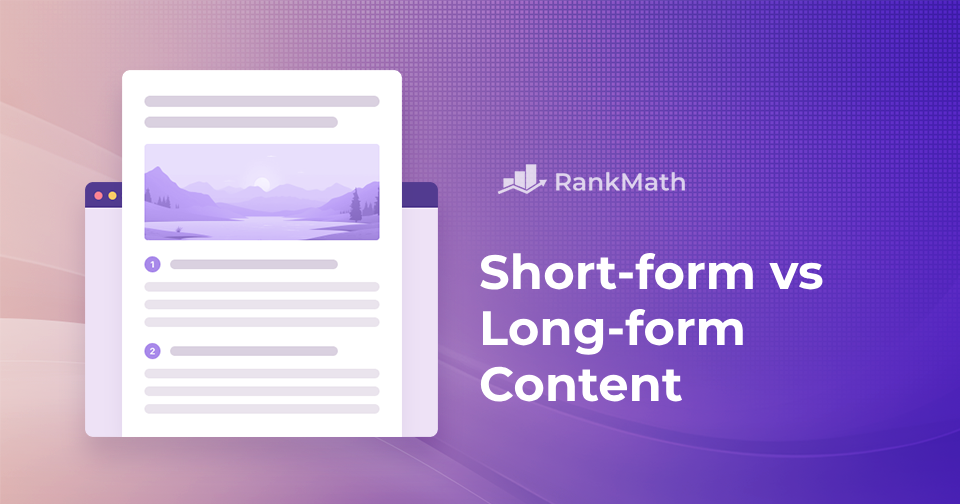When you’re creating content, one of the biggest questions you’ll face is: Should I write something short and snappy or go in-depth with a longer piece? Both approaches have their strengths, and the right choice really depends on your goals and what your audience needs.
If your readers want quick takeaways or scroll through social media looking for bite-sized insights, short-form content is your best friend. It’s fast to read, easy to digest, and perfect for grabbing attention in a busy feed.
But if you want to dive deeper, explain concepts thoroughly, or help someone solve a more complex problem, long-form content is the way to go.
In this post, I’ll walk you through both short-form and long-form content, highlight their strengths and weaknesses, and help you figure out which one makes the most sense for your content strategy. Let’s jump right in.

Table Of Contents
1 Understanding Short-Form vs. Long-Form Content
Let us begin by discussing short-form and long-form content.
But before we begin, it’s important to understand that according to Google’s documentation, the length of your content doesn’t directly affect your ranking, and there’s no required word count to aim for.
However, writing naturally and avoiding repetition can improve your chances of ranking because using various keywords helps match more search queries.
1.1 Short-Form Content
Short-form content is typically brief, usually 1,000 words or less.
This type of content is designed to be quick and to the point, making it ideal for audiences who prefer to consume information in bite-sized pieces.
Examples of short-form content include social media posts, blog posts, emails, product descriptions, infographics, and short videos.
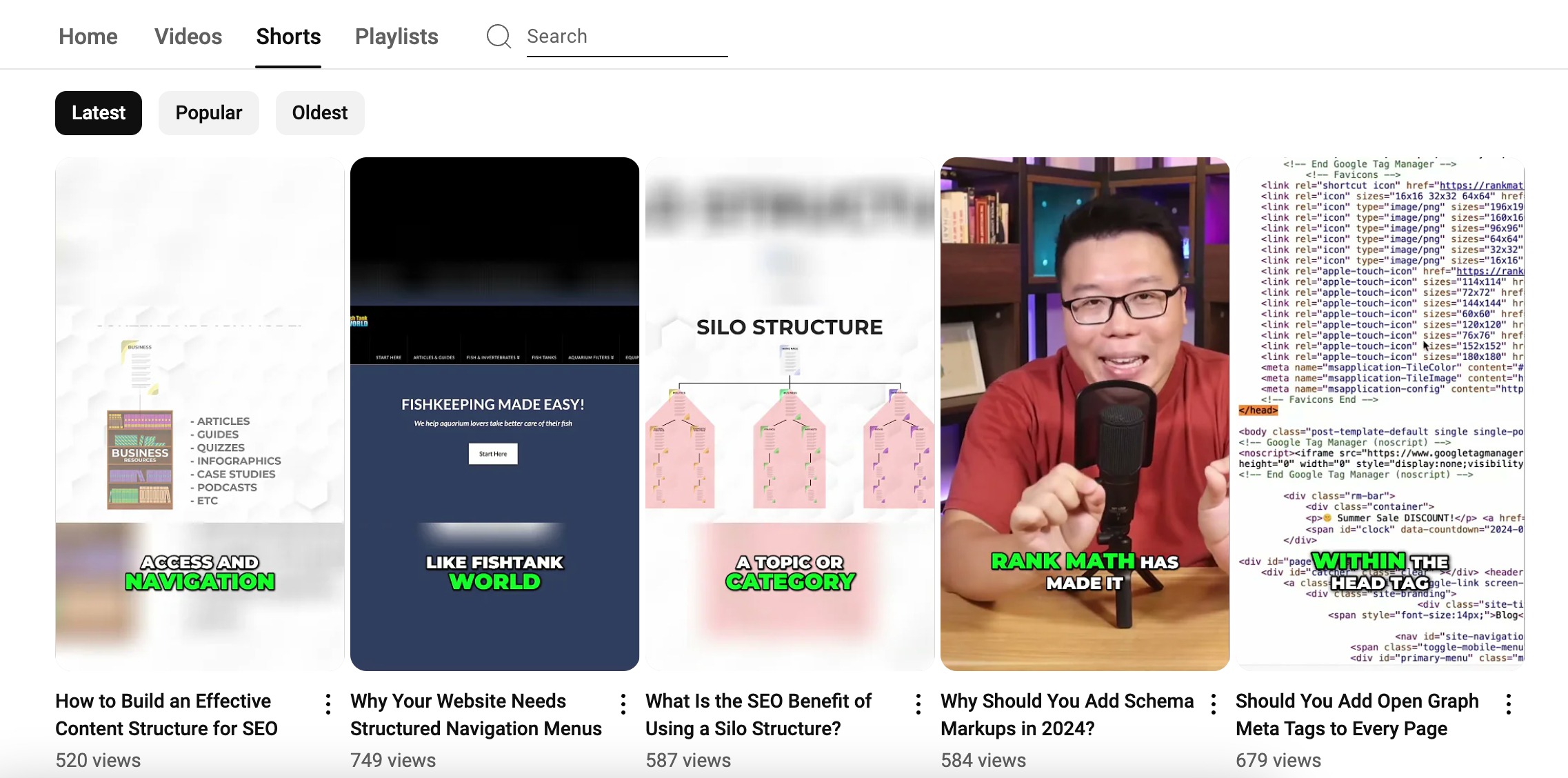
1.2 Long-Form Content
On the other hand, long-form content is much more detailed, often extending to 1,500 words or more.
This format is perfect for topics that require a deeper explanation or analysis.
Long-form content includes in-depth articles, white papers, eBooks, comprehensive guides, and long-form videos.
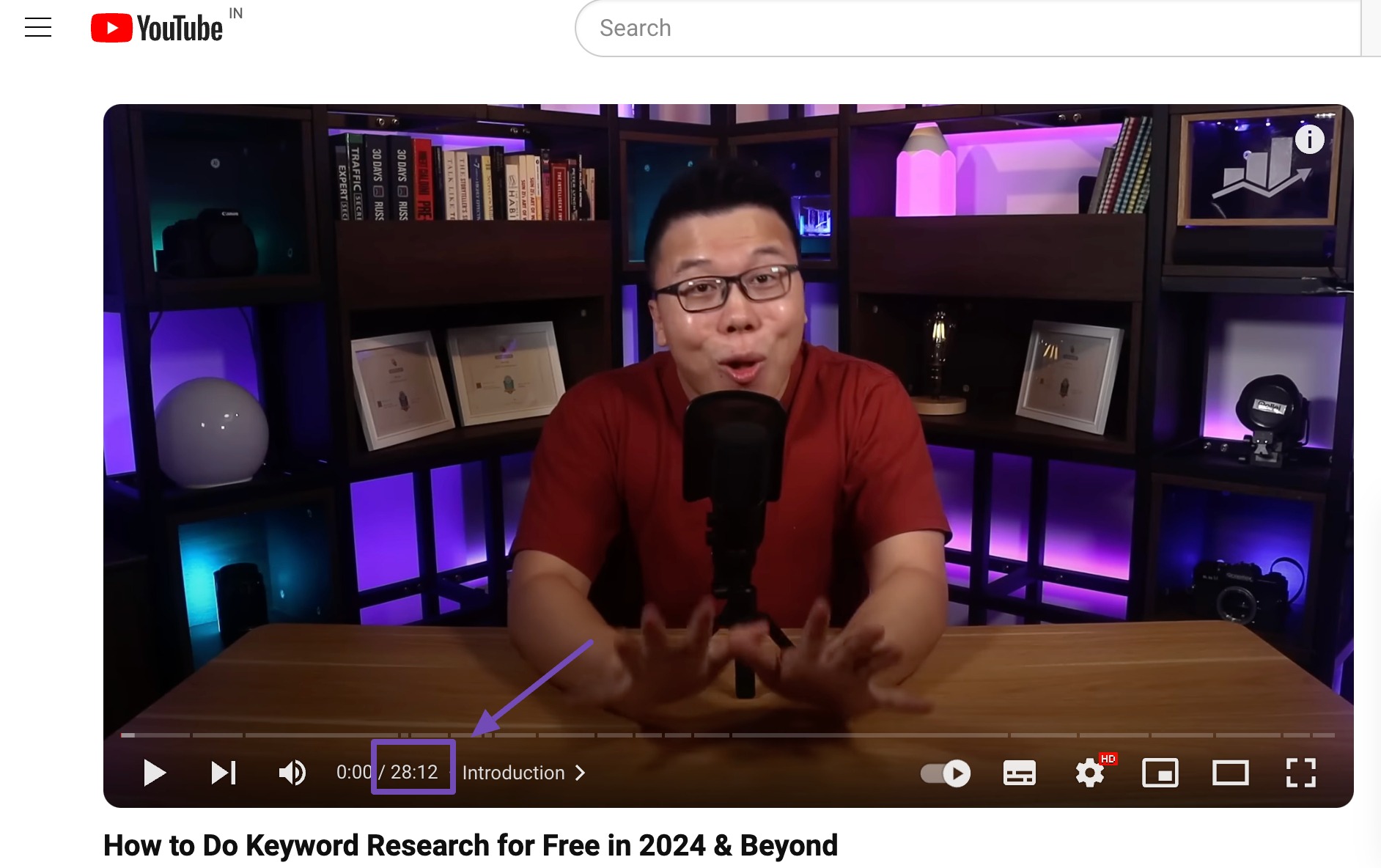
2 Short-Form vs. Long-Form Content: Pros and Cons
Now that we’ve talked about what short-form and long-form content are, let’s break down the pros and cons of each. This will help you decide which one works best for your goals.
Let’s begin with the short-form content type:
| Advantages of Short-Form Content | Disadvantages of Short-Form Content |
| Easier to consume quickly, ideal for audiences with limited time. | Struggles to provide in-depth analysis or substantial value. |
| Shorter creation time allows you to produce more content. | May not fully address complex topics or audience questions. |
| Highly shareable on social media platforms like TikTok, Instagram, and Twitter. | Harder to rank for competitive keywords due to limited keyword density. |
| Quick calls to action (CTAs) that drive immediate engagement. | Lacks the topical authority needed for strong SEO performance. |
| Perfect for mobile consumption and fast-paced campaigns. | Less impactful for establishing authority or covering detailed subjects. |
Below are the advantages and disadvantages of the long-form content type:
| Advantages of Long-Form Content | Disadvantages of Long-Form Content |
| Allows for comprehensive exploration of complex topics. | Requires more time and resources to research, write, and edit. |
| Builds authority and credibility in a niche. | May overwhelm or disengage readers looking for quick information. |
| Higher SEO potential due to in-depth keyword coverage. | Not ideal for fast-paced platforms like social media. |
| Increases dwell time, keeping users on your site longer. | Risk of losing audience attention if content is too long or unfocused. |
| Opportunity to target multiple keywords and variations. | May not be suitable for businesses with limited resources. |
3 How to Create Short-Form Content
One of the easiest ways to create short-form content is by repurposing your longer pieces. For instance, let’s say you’ve written a detailed guide on choosing a domain name for your blog. You don’t have to stop there, you can pull out quick, actionable tips and turn them into bite-sized posts for different platforms.
If you want to post on Facebook, Rank Math’s Content AI makes the process super simple.
Select the Facebook Post AI Tool under the Marketing and Sales category.
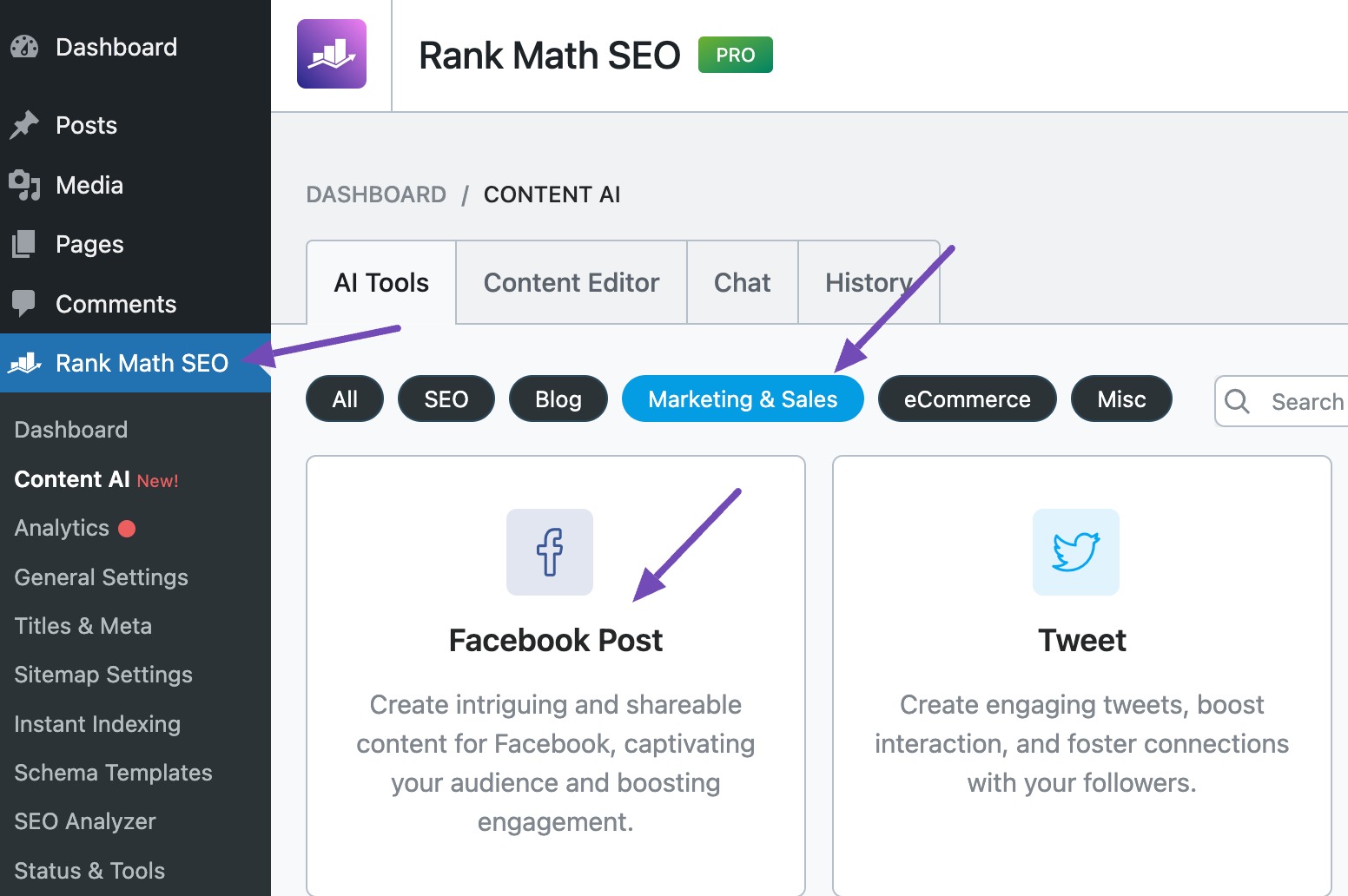
Provide a brief description, such as ‘Tips for choosing a domain name for your blog,’ and highlight the importance of a brandable domain.
Add a call-to-action like ‘Click to Read More,’ and include a link to your article. Customize the audience as per your preference and choose a tone that aligns with your brand, whether friendly, humorous, or informal.
You can also select the post length, such as short (1–2 sentences), medium (3–4 sentences), or long (5+ sentences), depending on your needs.
In a few moments, several post variations will be ready to engage your audience.
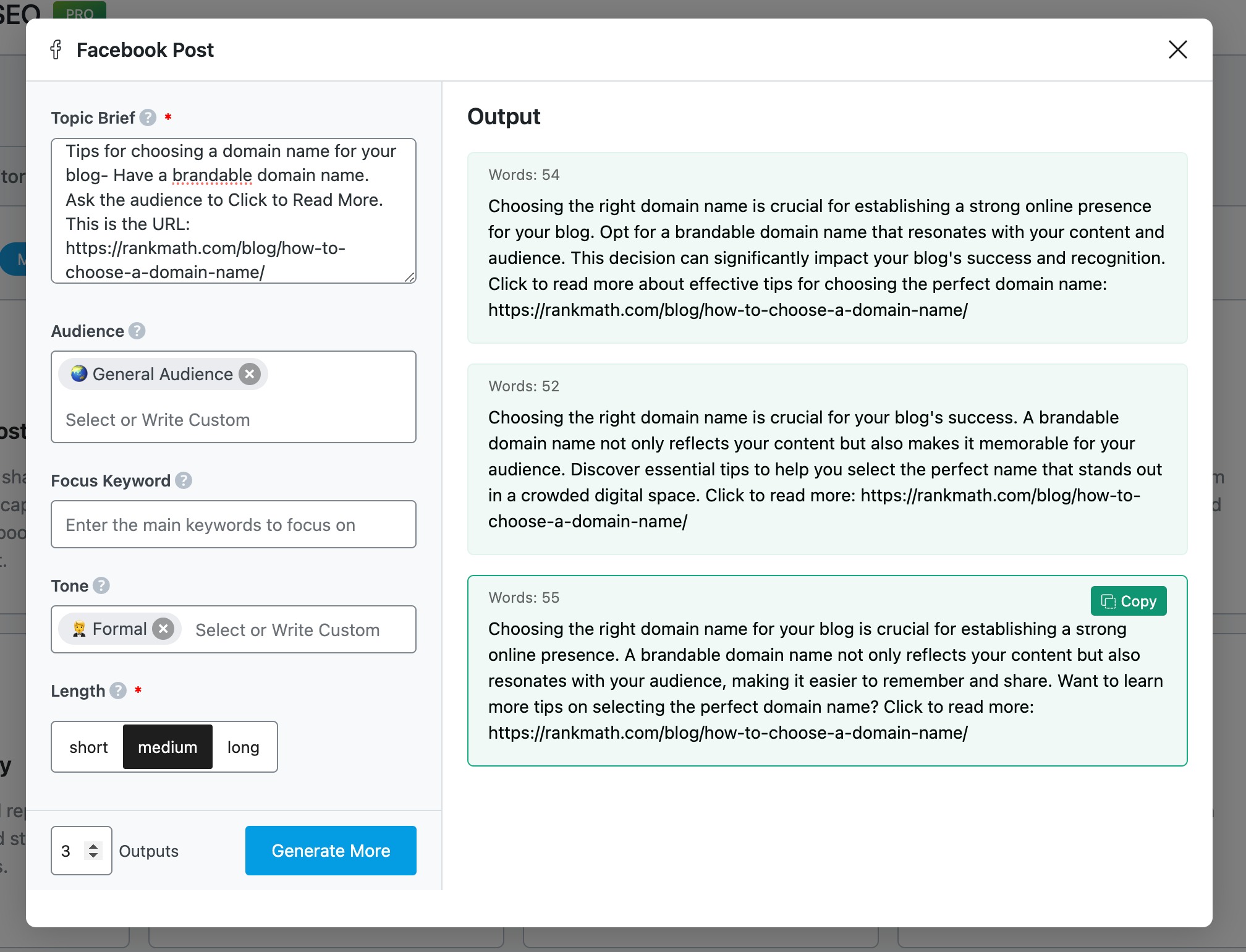
The same idea works perfectly for Twitter (X). Using the Tweet AI Tool in Content AI, you can generate short, punchy tweets that grab attention and encourage clicks.
Short-form content also shines in email campaigns. With the Email AI Tool, you can quickly draft a brief email that teases your full article and nudges subscribers to read more.
And don’t forget video. If you’d like to create YouTube Shorts or other short-form videos, the YouTube Video Script AI Tool can help you script engaging clips that repurpose your long-form content into scroll-stopping videos.
4 How to Create Long-Form Content
If you’ve ever felt overwhelmed by the thought of writing a long article, don’t worry, you don’t have to start from scratch.
With Rank Math’s Blog Post Wizard AI tool, you can build a good draft in minutes and then add your own expertise to make it shine.
Start by defining your niche, audience, and tone, for instance, an SEO blog for beginners, and select the article style, such as a tutorial or listicle. The tool will suggest topics based on your input. If needed, refine the description or regenerate ideas to match your goals.
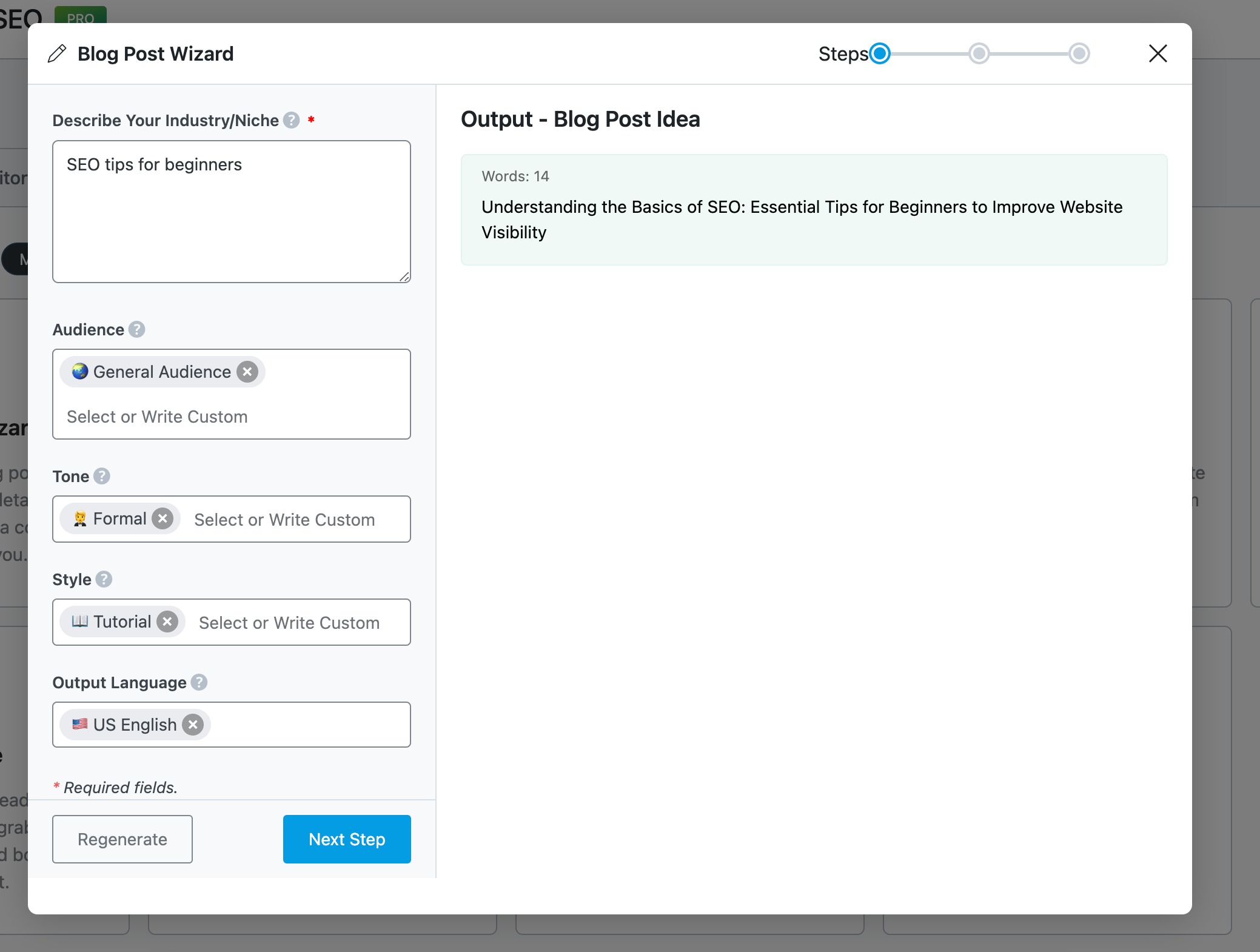
Once you’ve chosen a topic, generate an outline by adding focus keywords and letting the tool suggest headings. After finalizing the outline, the tool drafts a complete article, within seconds.
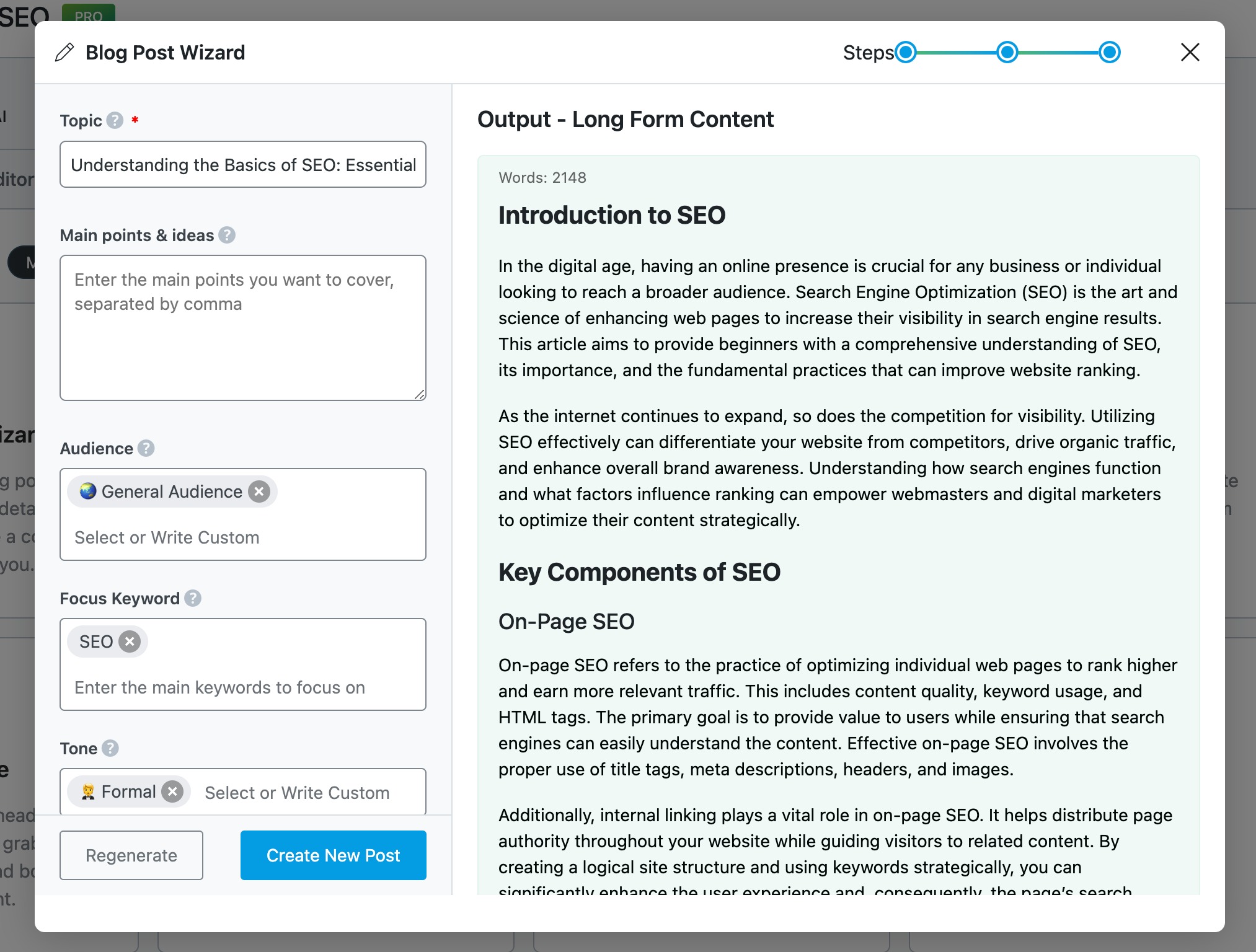
You can then enhance the content by adding your expertise and insights. When ready, publish directly by creating a formatted blog post with a single click.
This process accelerates long-form content creation, making it easier to produce high-quality, SEO-friendly articles efficiently.
5 How to Choose Between Short-Form and Long-Form Content
Now that you’re aware of the differences between short-form and long-form content, let us discuss how to choose them for your business.
5.1 Identify Your Goals
Start by asking yourself: What do I want my content to achieve?
If your goal is quick engagement or boosting visibility, short-form content will usually be the better fit. A short blog post, a tweet, or a catchy Instagram update can attract attention fast, spark interactions, and drive clicks.
This format is especially useful when you’re running time-sensitive promotions or want your audience to take immediate action.

On the other hand, if you want to build authority, improve your SEO, or provide real depth, long-form content is the way to go.
Let’s say you want your brand to be seen as a thought leader, in that case, detailed guides, case studies, or white papers will give your audience the value they’re looking for.
These pieces show expertise, build trust, and attract readers who are serious about your topic.
5.2 Understand Your Audience
If you want your content to hit the mark, you first need to understand your audience, what they like, how they behave, and where they spend their time. Once you know this, it becomes much easier to choose the right topics and the right format.
Google Analytics is a powerful tool for understanding your target audience and creating your content strategy, whether you’re focusing on short-form or long-form content.
The User acquisition report provides data on how audiences are finding and accessing your website, including the sources of traffic such as organic search, social media, direct visits, and referrals.
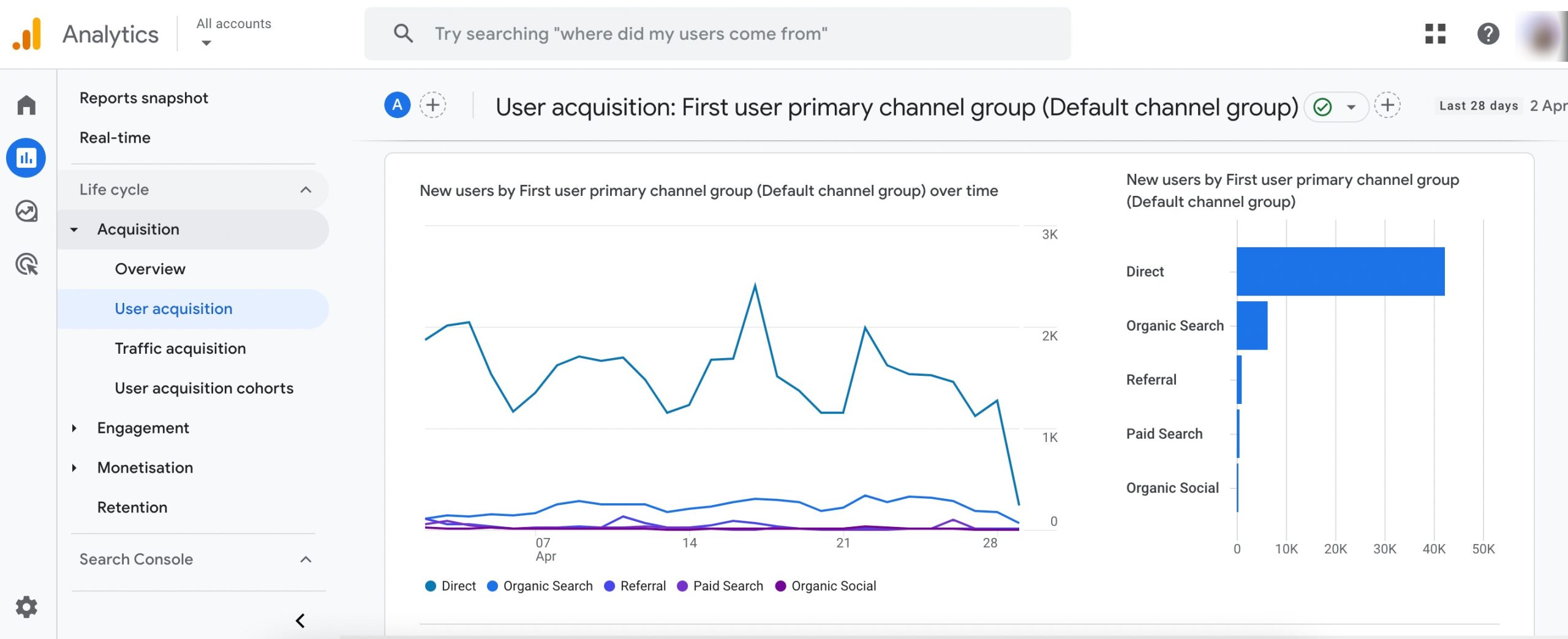
By examining these sources, you can determine which channels are most effective for attracting audience who engage with short-form content versus those who prefer long-form content.
For example, if most of your traffic comes from social platforms, your audience probably prefers quick, engaging content like short posts or videos. But if you see strong traffic from organic search, that’s a good signal they’re looking for in-depth answers, which means long-form content might serve them better.
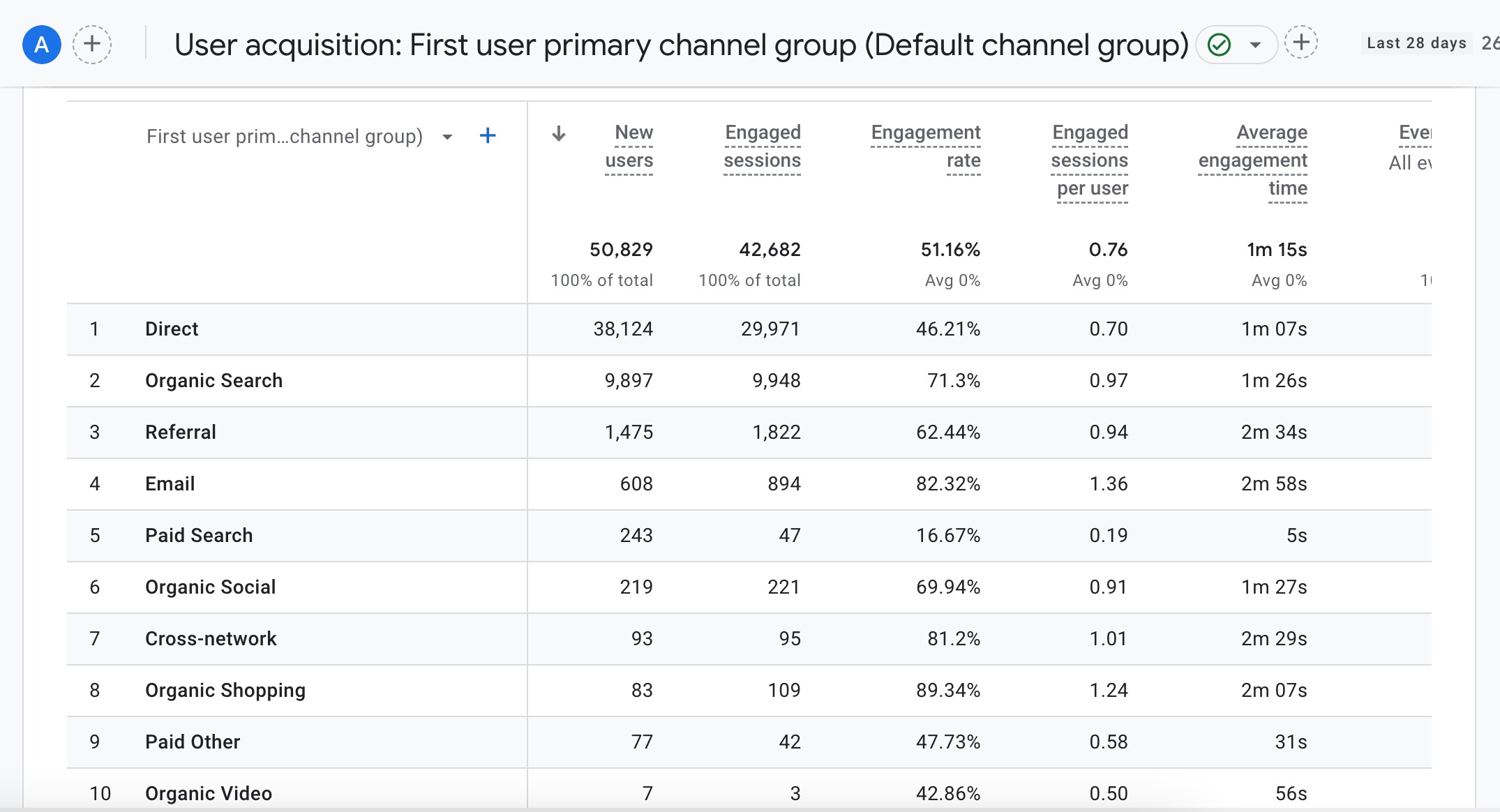
Next, use the Engagement report. Pay attention to metrics like Average Engagement Time. If audience spend more time on your longer pieces, that’s a clear sign they value detailed content. But if they’re bouncing quickly, it may mean shorter, sharper posts are a better fit.
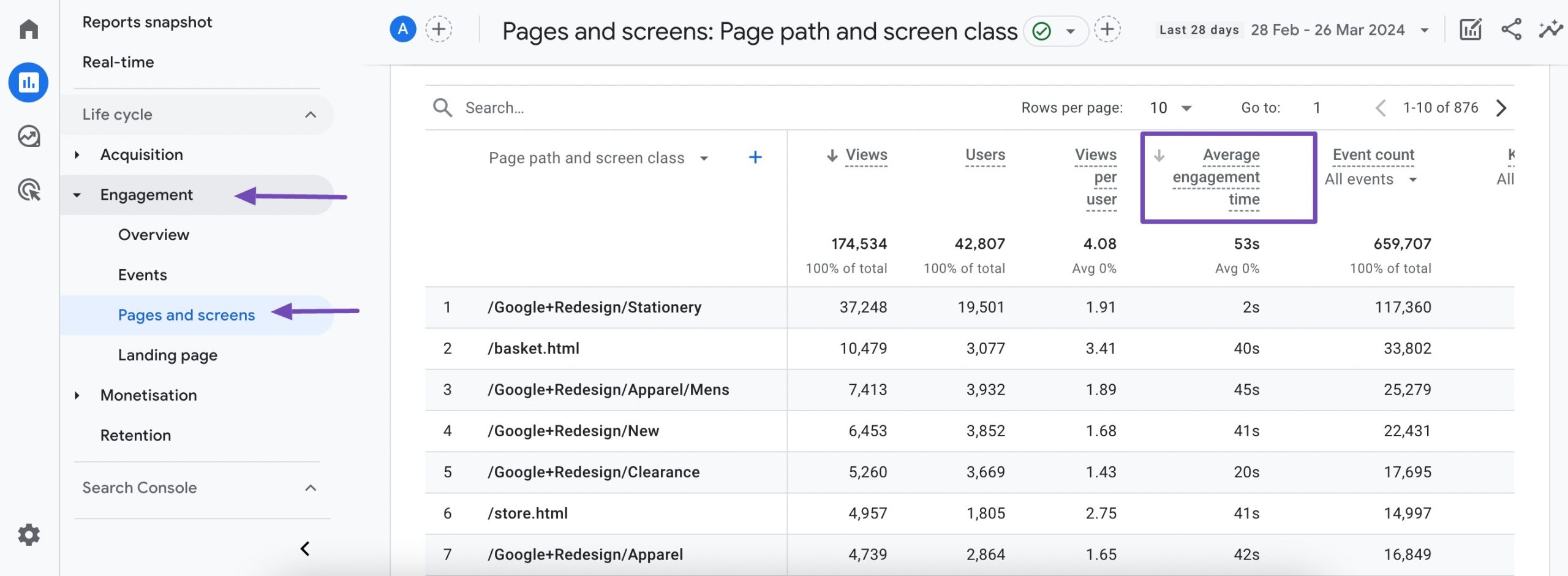
5.3 Consider the Platform
You also need to think about where your content will live. Every platform has its own sweet spot.
If you’re on fast-moving platforms like X, Instagram, or TikTok, short-form content will almost always perform better. A 30-second reel, a quick infographic, or a catchy update can grab attention instantly and keep your brand visible in the scroll.

But if you’re publishing on your blog, website, or professional spaces like LinkedIn or Medium, you’ve got more room to go deep. Here, long-form content works best, think detailed articles, white papers, case studies, or eBooks that provide real value and establish authority.
5.4 Analyze the Keyword’s Search Intent
Don’t forget about search intent, the reason someone types a keyword into Google. Understanding intent helps you match your content to what your audience actually wants.
Search intent refers to the reason behind the audiences’ search query, whether they’re looking for quick answers, in-depth information, or transactional content.

If someone’s searching for quick answers (like best SEO tips or restaurants near me), short-form content is your best bet. A concise list, short blog, or quick video will get the job done.
But if the query shows informational intent (like how to build a website), that’s your cue to create long-form content. A detailed guide, tutorial, or in-depth blog post is much more likely to satisfy the searcher and rank higher in results.
With Rank Math PRO’s Search Intent feature, you can easily align your content with the correct search intent. The Show Intent label beside your primary keyword instantly displays its intent, helping you optimize effectively.
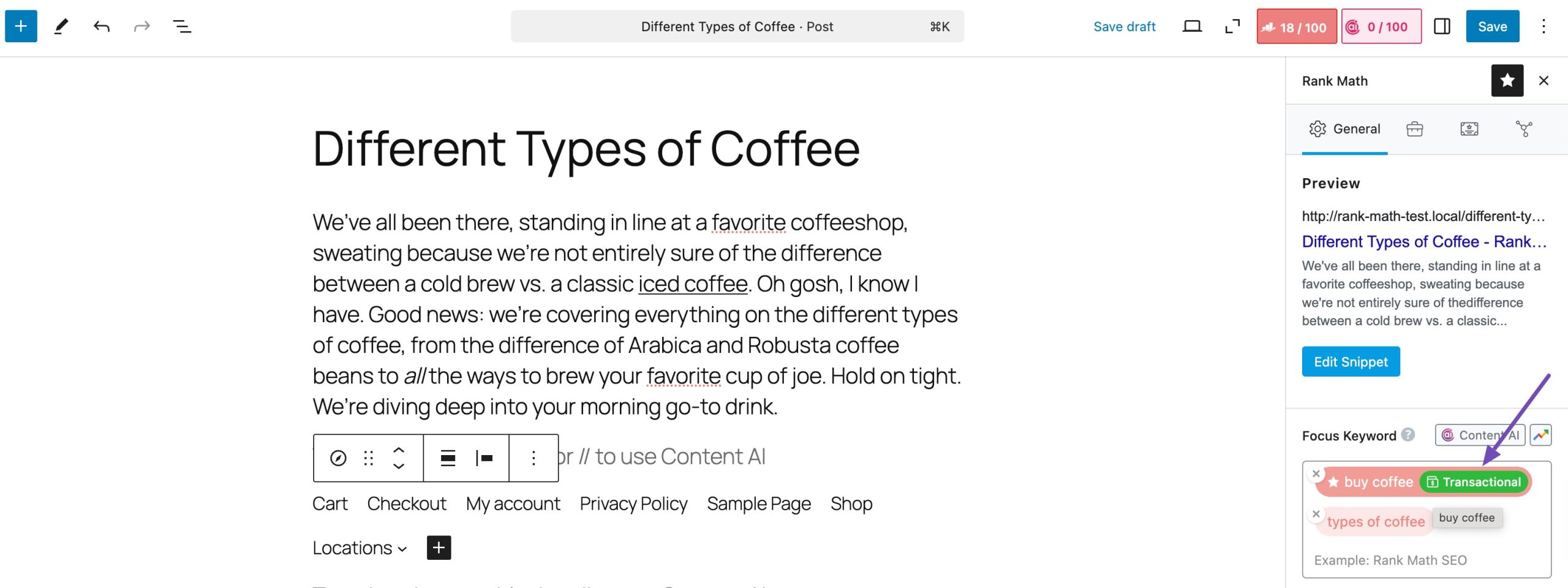
5.5 Evaluate Topic Complexity
When you’re deciding between long-form and short-form content, think about how complex your topic is.
If the subject is detailed and requires explanation from multiple angles, long-form content is usually the better choice. For example, if you’re writing about The Benefits of AI in Healthcare, you’d need space to cover areas like diagnostics, treatment planning, patient monitoring, and even the ethical concerns. That kind of depth works best in a comprehensive guide or in-depth article.
This topic demands detailed analysis and supporting data, which can be better delivered through a comprehensive guide or an in-depth article.

In contrast, if your topic is simple and straightforward, short-form content will do the job just fine. A post like 5 Quick Tips for Improving Your Morning Routine doesn’t need pages of analysis. You can deliver it as an infographic, a social post, or a short video. This way, your readers get the key takeaways quickly and can put them into action right away.
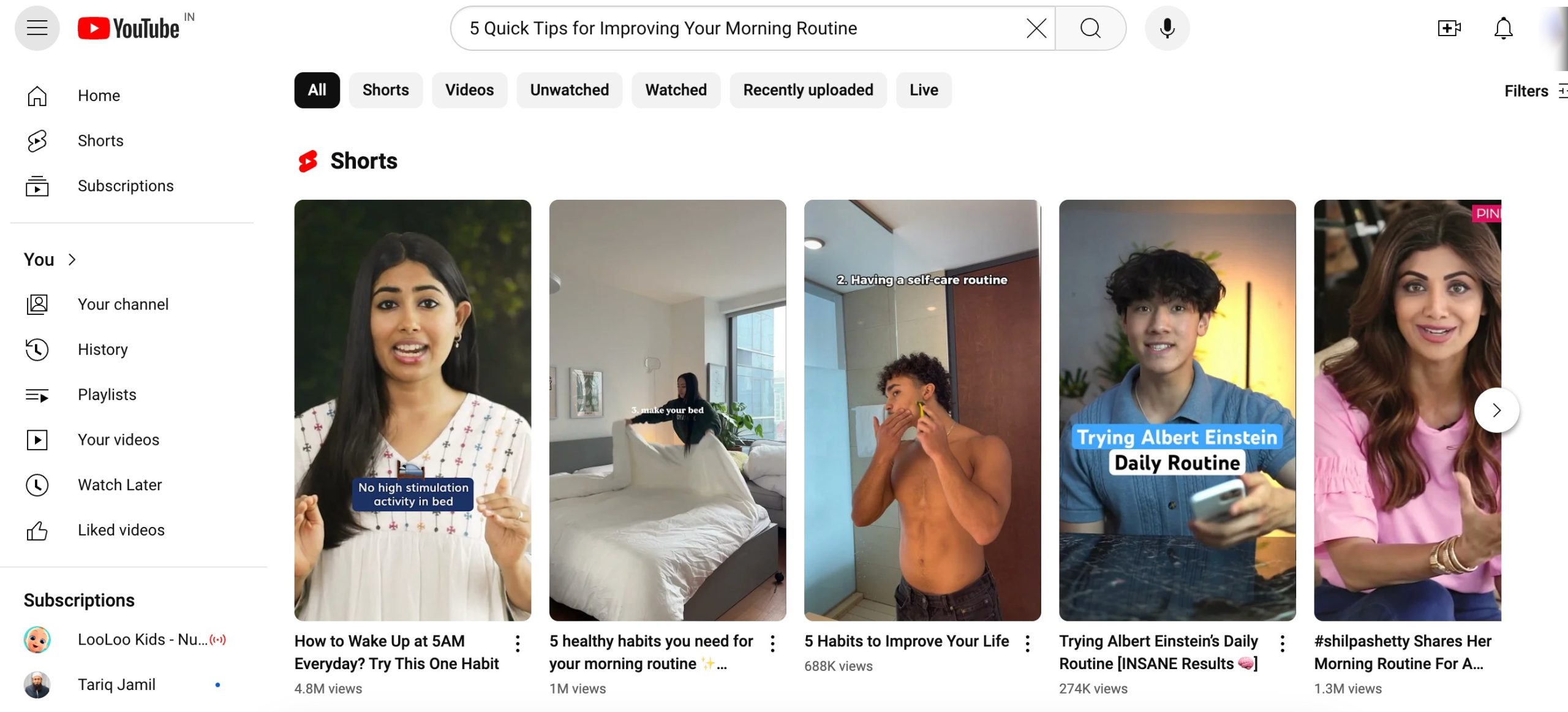
5.6 Determine What Can Be Repurposed
Repurposing content is one of the easiest ways to get more out of the work you’ve already done. I
nstead of creating something new from scratch every time, you can adapt your existing content into different formats.
For example, if you have a long-form blog post, such as a detailed guide on SEO Tips, this content can be repurposed into a series of short-form pieces. You can extract key points and create short social media posts, infographics, or a quick video series to share bite-sized information.
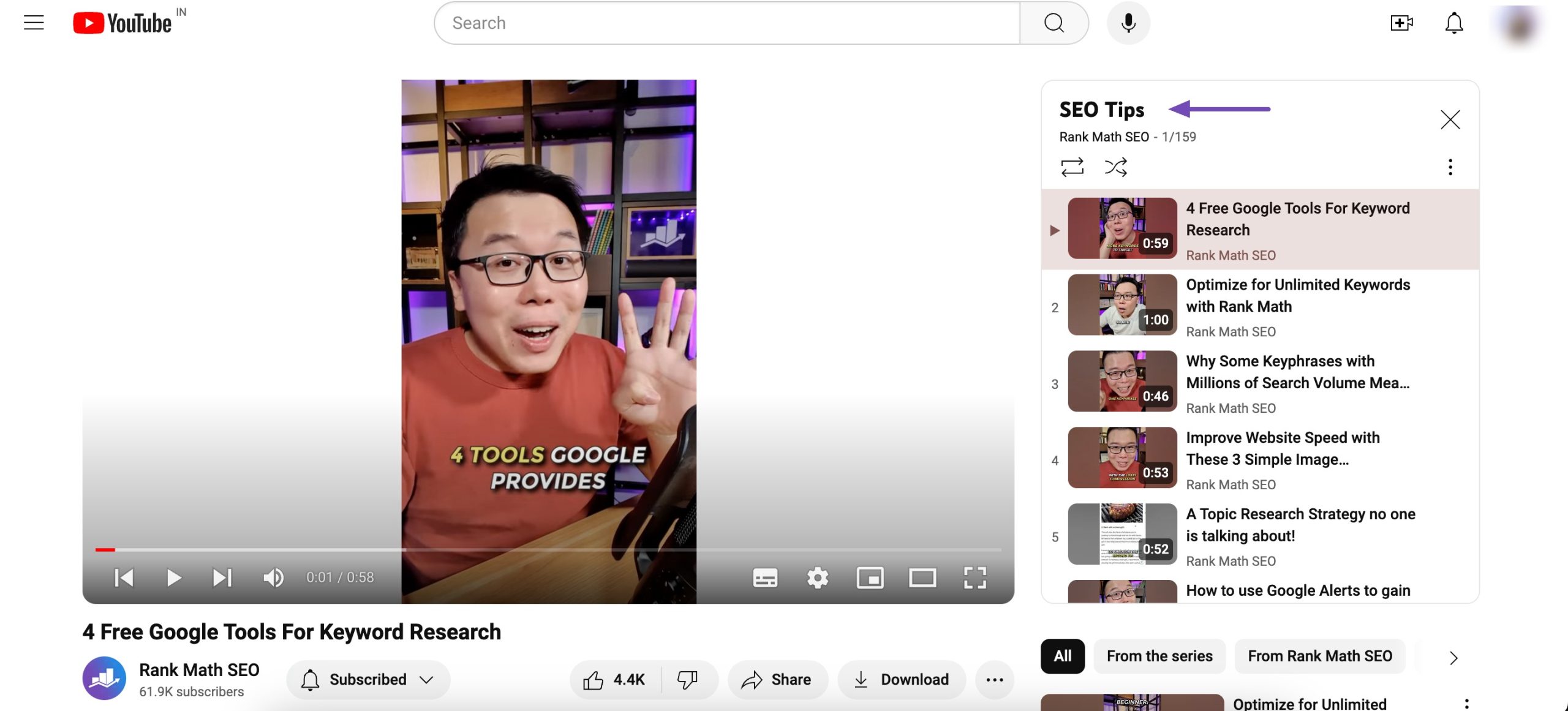
Conversely, if you start with short-form content, such as a few blog posts or social media updates on a related topic, you can expand upon them to create long-form content.
Refer to our dedicated tutorial on content repurposing to efficiently reach different audience segments, whether they prefer quick information or in-depth content.
6 Frequently Asked Questions
How do I choose between short-form and long-form content?
Consider your goals, audience preferences, and the platform. Short-form content is ideal for quick engagement and broad reach, while long-form content is better for in-depth exploration and building authority.
Can I repurpose long-form content into short-form content?
Yes, you can repurpose long-form content by breaking it down into smaller content, such as turning a detailed blog post into a series of social media updates, infographics, or short videos.
Can I expand short-form content into long-form content?
Absolutely. You can combine multiple short-form pieces on related topics into a long-form article, eBook, or comprehensive guide for deeper exploration of the subject.
How can I balance short-form and long-form content in my strategy?
You can balance both by using short-form content to drive engagement and visibility, while using long-form content to provide value, build authority, and improve SEO. Diversifying your content strategy allows you to reach a broader audience with different consumption preferences.
7 Conclusion
In the end, both short-form and long-form content have their place in your strategy; it’s all about knowing when to use each.
If you want quick attention, more shares, and snackable insights, short-form is your go-to. But when you need to go deeper, explain a complex topic, or build authority, long-form content shines.
The real trick is finding the balance. Think about your goals, your audience, and the platform you’re publishing on, that’s how you decide which format will deliver the most value.
So, what about you? Do you enjoy creating quick, punchy posts or in-depth, detailed articles? Let us know by tweeting @rankmathseo.
